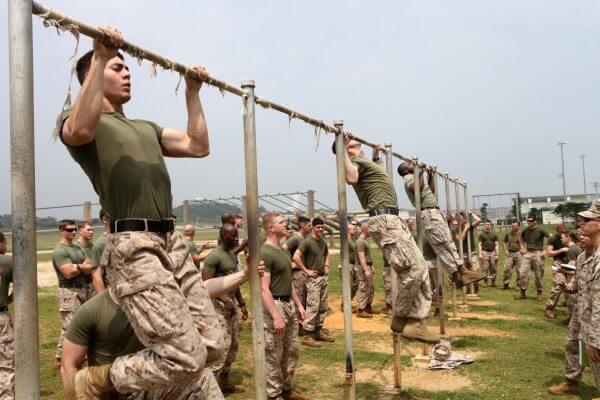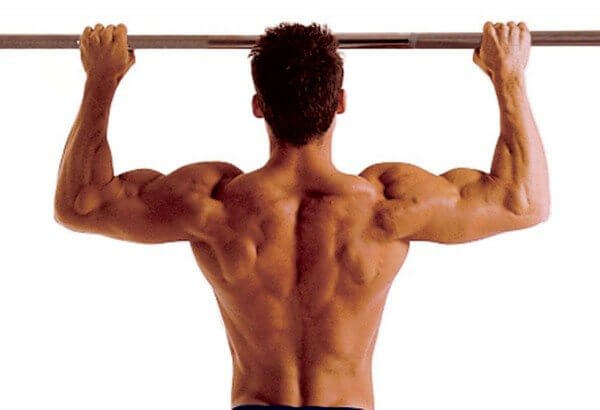Who needs a gym when you can do pull-ups or chin-ups anywhere? But which is the better option? Check out the pros and cons of each and build your muscles the right way.
Pull-Ups and Chin-Ups: Great Exercises
Another day, another gym showdown. This showdown features two exercises that target the upper body. These exercises are pull-ups and chin-ups. These exercises are so powerful that they form part of the exercise regimen that gets military personnel and law enforcement officers ready to serve and protect the nation and cities and towns. They will work just as well for you, too. This gym showdown maps out the benefits of both exercises so you can decide which works best for you.
Pull-Ups: How to Do Them
Pull-ups are done with an overhand grip on the bar. Place your hands shoulder width apart and then raise your body until your chin is level with the bar. You can also change your hand grip to target different muscles in your upper body.
Pull-Ups : Muscles Worked
Pull-ups work nearly all the muscles in the upper body with a few abdominal muscles thrown in for good measure. Pull-ups work the chest muscles (pectoralis major), forearms (brachioradialis), traps, deltoids, abdominals (rectus abdominis and external oblique), lats, biceps, and triceps. Different hand positions place more emphasize on different muscles. For example, a grip that is greater than shoulder width apart targets your lats. A standard pull-up, with your hands placed shoulder width apart, focuses on all the muscles listed above.
Pull-Ups: Benefits
There are a lot of benefits that come with doing pull-ups. One of the first benefits is that they are convenient to do. You don’t need any special equipment in order to do a pull-up. All you need is a bar and you’re ready to go. You can go to a park and do pull-ups on the monkey bars. You can purchase a pull-up bar for around $20 and do them in your home. You can even use rafters or tree limbs. There are no limits to this exercise.
Another benefit of pull-ups is their versatility. You can use a narrow grip and target a large group of muscles or use a wide grip and blast your lats. Pull-ups can also help you increase your grip strength. If you’re a bodybuilder, a strong grip helps you to do bicep curls, deadlifts and a long list of other strength training exercises. Pull-ups work your forearm muscles and those muscles help strengthen your grip.
‘Pull-ups and chin-ups are like two sides of the same coin. They both work a myriad of muscles in the upper body.'
This exercise will also speed up your fat loss efforts. Cardio exercises, like walking on a treadmill or riding a bike, can get a bit boring. You can use pull-ups to help you burn fat by decreasing the time between sets or super setting them with another exercise. You’ll get your heart rate up, you’ll work hard and you will burn fat.
Chin-Ups: How to Do Them
Chin-ups are done with an underhand grip on the bar. With your hands placed shoulder-width apart, grip the bar and raise your body until your chin is above the bar. As with the pull-up, you can vary your grip width, but for this exercise you shouldn’t place your hands too far apart. If your hand grip is too wide, it will decrease your range of motion and possibly lead to injury.
Chin-ups: Muscles Worked
The chin up works all the muscles worked by the pull-up except the chin-up places more emphasis on the biceps and upper back. A slightly wider grip will target your biceps and lats while a standard grip blasts your biceps and upper back.
Chin-ups: Benefits
Just as you will benefit from doing pull-ups, chin-ups come with a set of benefits all their own. Chin-ups target your biceps and when performed properly and on a consistent basis, they will help your bicep muscles grow. By varying your grip and changing your workout tempo (slower movements, rep range between 8 – 12, and short rest periods in between sets), you can use chin-ups to help you get huge biceps.
Chin-ups help you work more muscle. This means both fast twitch and slow twitch fibers are being put to work. The fast twitch muscles help you lift big while the slow twitch muscles help support the larger muscle groups. Both need to be as strong as possible if you’re going to gain lots of muscle, and chin ups help you strengthen all your muscles.
Body weight exercises transfer perfectly to sports and everyday life. The movement you perform when doing a chin-up is natural, as opposed to movement performed when using weight lifting machines. This will help give you more strength, endurance and energy that you can use to excel in sports or just make everyday activities easy to do.
Get Amazing Results
Pull-ups and chin-ups are like two sides of the same coin. They both work a myriad of muscles in the upper body. With just a turn of the wrist or a change in grip, you can make certain muscles work harder. You should add pull-ups and chin-ups to your workout routine to improve your grip strength, work more muscles and make every day chores a breeze.





